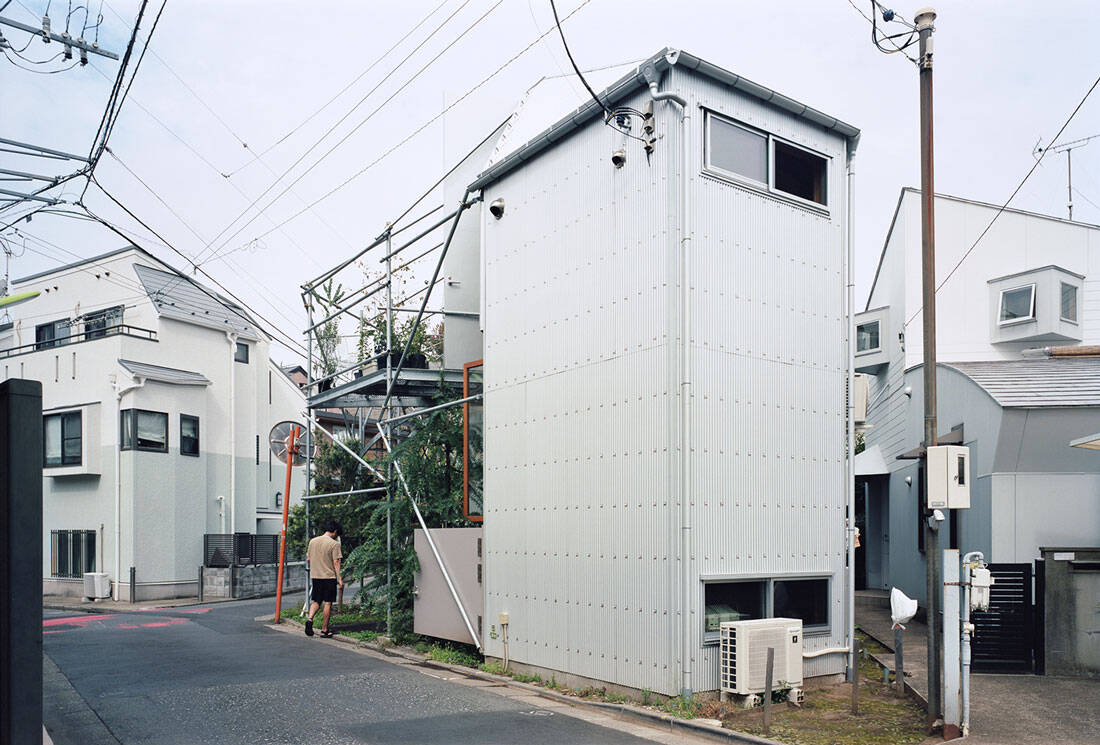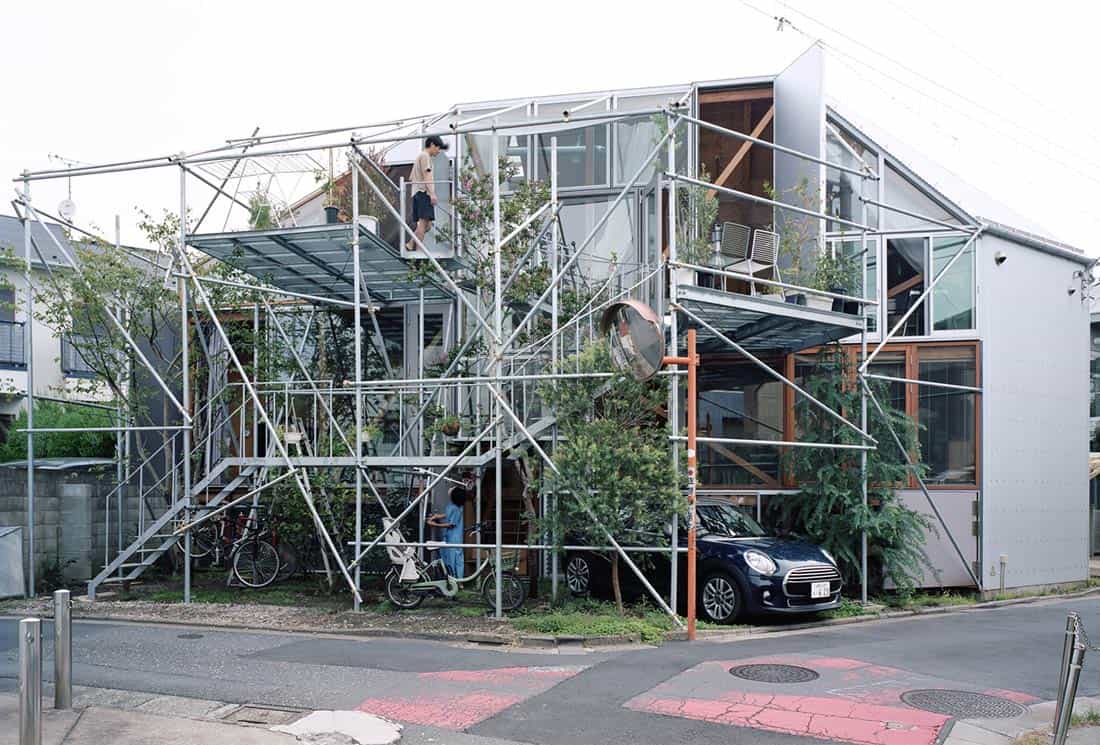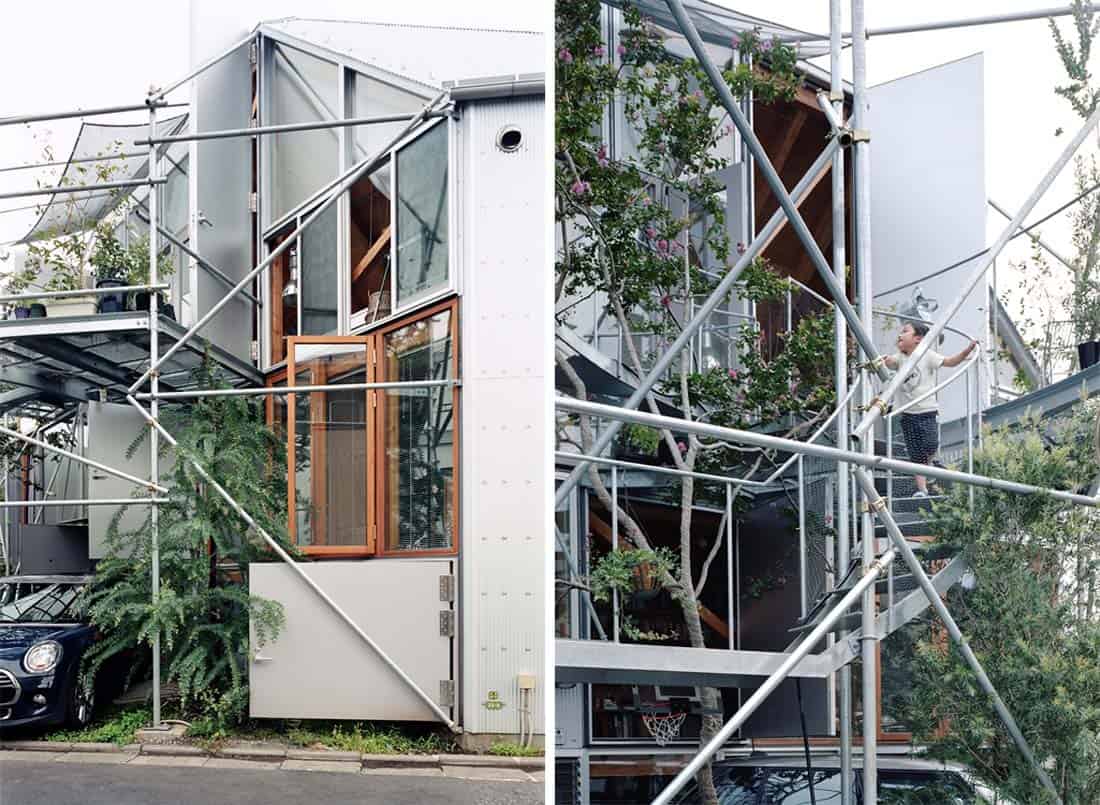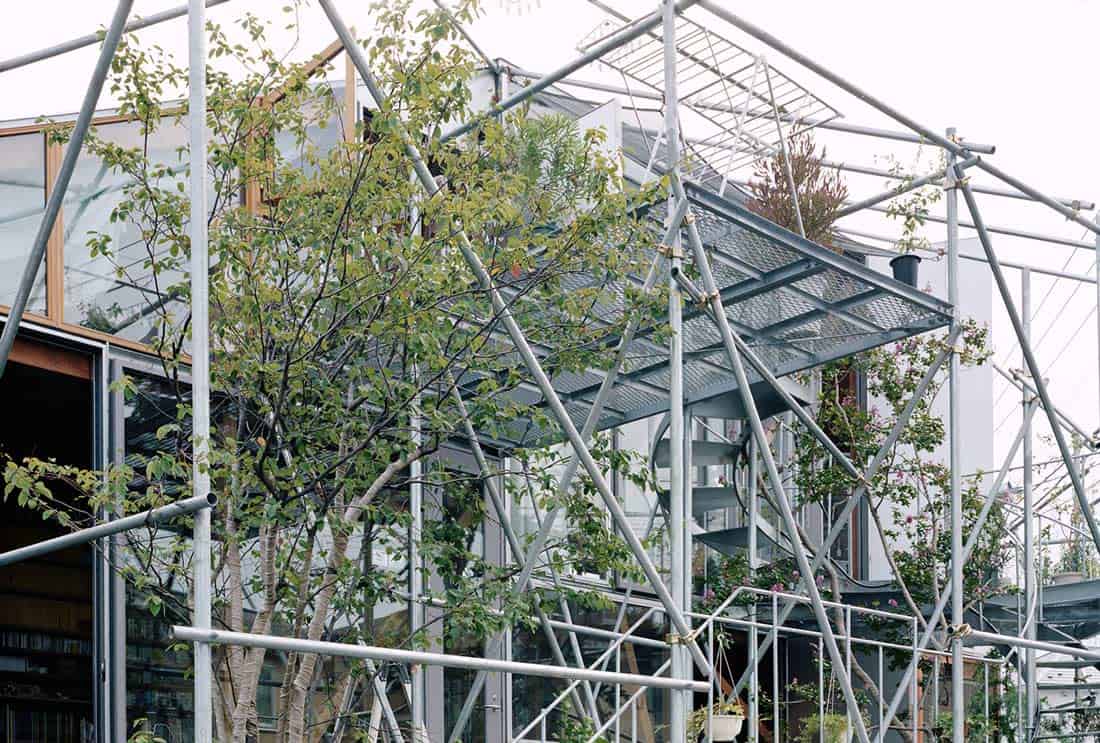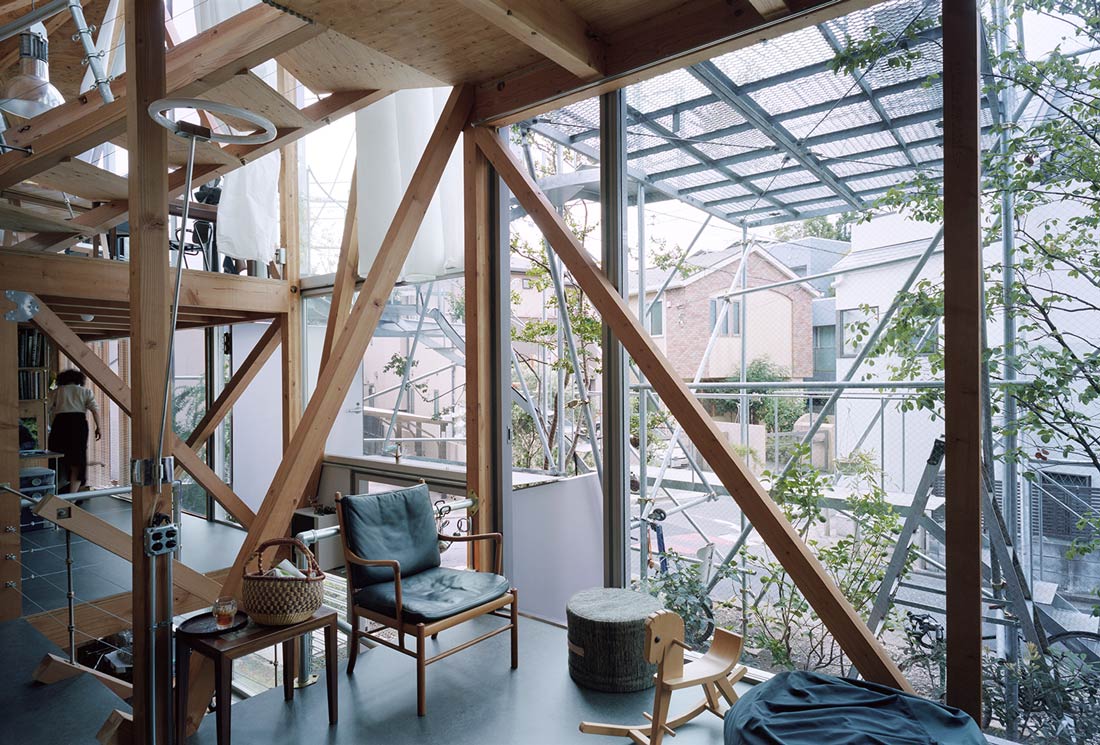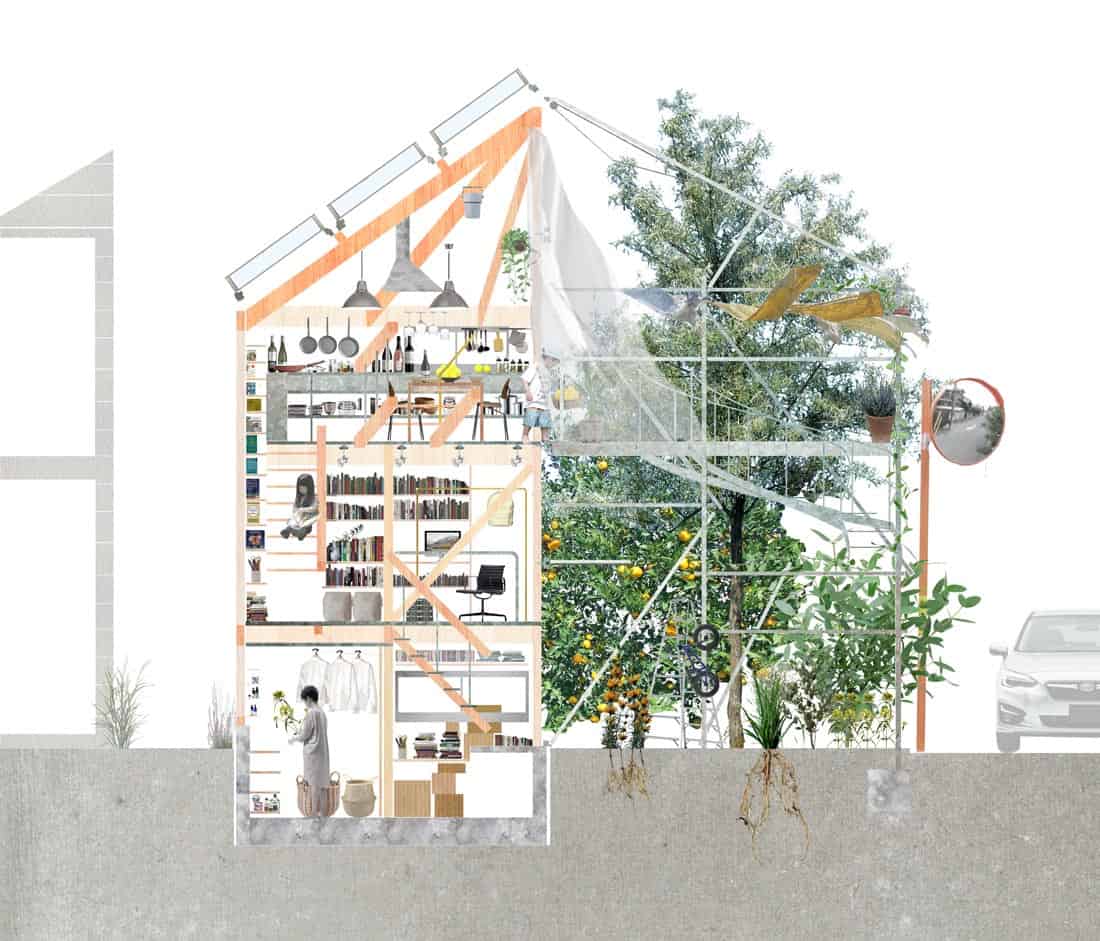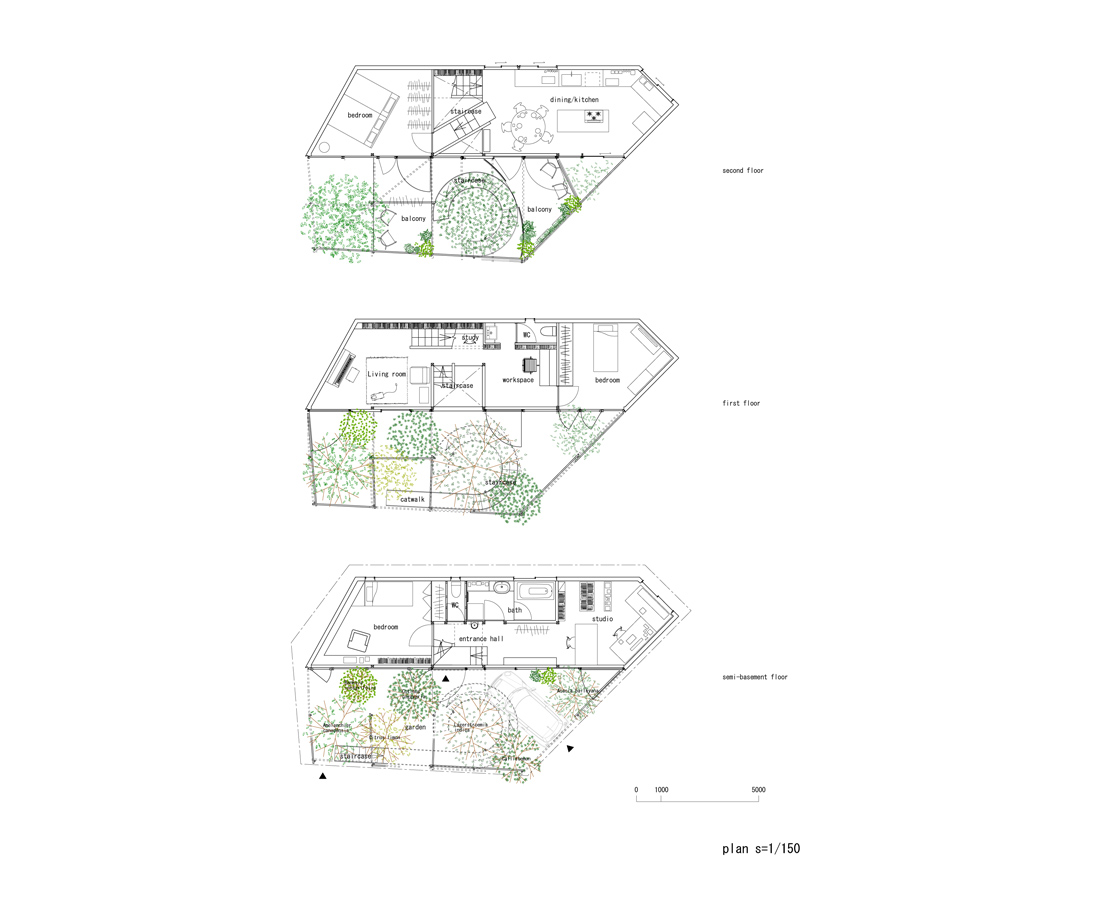While designing this house, I remembered the Rwanda forest I visited a few years ago. It is a vast forest around the Virunga Volcanoes, on the border of three countries – Rwanda, Congo and Uganda – where wild mountain gorillas live and roam. When we caught up with a troop of gorillas following the guidance of local people, they were sitting and resting among soft bushes in an open space of the forest. Infant gorillas played in the trees and ran around among the adults, as each adult settled comfortably to groom themselves or to eat grass and tree bark. It was like a scene in a house. They found their places among dense trees and improvised their houses. Although there were no walls or roofs, trees, tall grass and creepers entwined with them; the overlaps and outlines created by unevenness in the terrain enclosed the presence of inhabitant, to form a comfortable density that could be called a house. This is the vernacular architecture in the gorilla forest.
What if there were to be such a house in a small corner of a residential area in Tokyo? Is it possible to create a house where a bare life is softly enclosed by layers of linear materials and objects to shape various depths, and where it is somewhat protected from the sun and the eyes of people on the street? To achieve this, I first decided to radically emphasize linear elements both inside and outside of the house.
The structural materials are exposed so that joints and bonded parts can be seen from the side. There is no wall between the house and its garden, but rather a composite assembly of windows and joinery. In addition to structural elements such as squared timbers, steel members, pillars and beams of single pipes and bracings, there are staircases, balustrades, window frames, furniture, curtains, books, clothing and other sundries, trees, potted plants, bicycles, a watering can, shovels and, moreover, a huge number of books, videotapes, DVDs, etc. of the resident’s video production work, scattered around to shape varied scenes of life. Layers of lines are interwoven from the outside to the inside of the building so that each inhabitant can live freely and find his or her own relaxing environment.
For the garden, I selected many edible plants such as fruit trees, herbs, vegetables, and plants that can be used as cut flowers when pruning. I extended the living space and the terraces that serve as platforms for harvesting, put a staircase around trees that require regular pruning, and laid a catwalk by the road along the fence where vines grow, within the frames of steel pipes. Just as the structures and objects coexist inside the house without negating one another, I planned the structures and plants to combine to generate density in the outdoors.
For reasons of cost, maintainability, and the future possibility of expansion and reconstruction, I chose a wooden structure for the interior while the exterior structure is made of steel. Single pipes can be easily assembled and disassembled using clamps, so it is possible to customize according to the demands of daily life, such as changing doorways, adding a new balustrade, setting up a plant strut or a clothesline for hanging things. The boundary between the building and the garden is made up of aluminum, wooden and steel sashes according to the requirements of each room. There are large and small sliding windows, projecting windows, single swing windows and jalousie windows. By opening and closing these sashes, the house flows into the garden and the garden sneaks into the house; thus the overlapping of two scenes creates a comfortable living space just like a gorilla forest.
